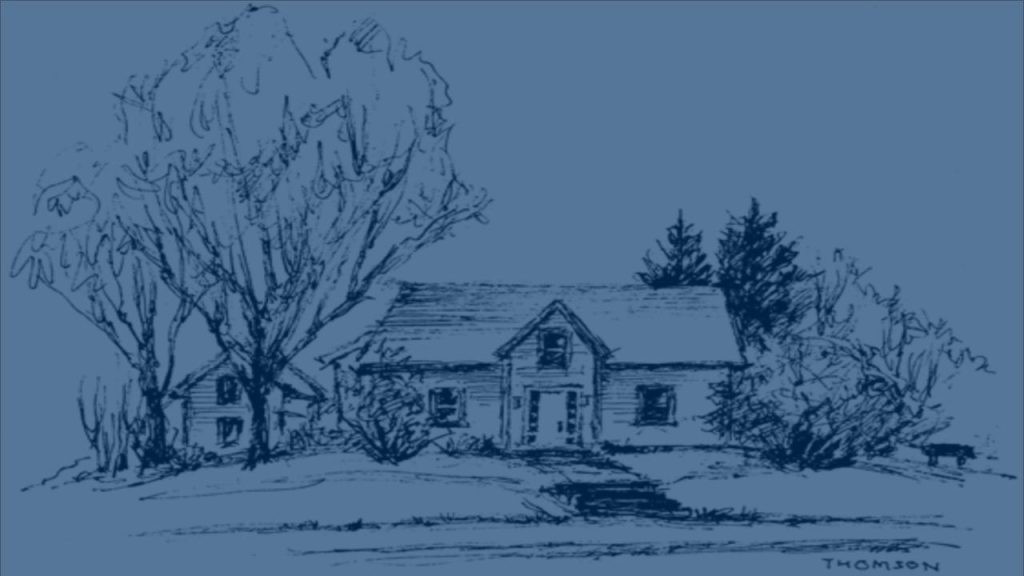Patch Innovation Station

Cultivate student-led sustainability innovation.
SUPPORT THE PATCH INNOVATION STATION
Built on a legacy of sustainability innovation
Dr. Edith Patch was a visionary scientist who extolled the benefits of insects in an era when chemical pesticides were used indiscriminately. Her pioneering work with aphids at the University of Maine earned her the respect of her peers when few women worked outside the home, let alone in the sciences. A prolific author, Patch inspired appreciation and stewardship of nature’s smallest creatures through magazine articles and children’s books.
Patch’s former home, Braeside, has been vacant for decades, awaiting its next chapter just steps from the UMaine campus. The establishment of the Patch Innovation Station will restore the home and edify Patch’s legacy.
About the future Patch Innovation Station
The Patch Innovation Station will galvanize Dr. Edith Patch’s legacy as a scientist and ambassador for insects, and celebrate her pioneering role for women in science. With your support, the Station will host:
- Small classes that inspire sustainable ideas.
- Meeting space to foster collaboration across disciplines.
- Trail-blazing collaborations with businesses to foster student-led innovation that knocks together disciplinary silos.
- Expose K-12 students and teachers to agritech innovation through tours, virtual lectures, and hands-on activities.
- A museum in the front parlor, where Dr. Patch once hosted lectures. Even the step on which she stood to rise above her mostly male audience will remain intact.
Dr. Edith Patch was a pioneer of sustainability science
Edith Patch is recognized as the first professional woman entomologist in the United States. The visionary scientist worked at the vanguard of her field. She predicted that farmers would need to truck in bees to pollinate their crops, and foresaw that butterflies, birds and other organisms would need refuge from human activities.
In a 1936 speech for the Maine Agricultural News Radio Program titled “Aphids, Aphids, Everywhere,” Patch used the life cycle of aphids to explain the dangers of excessive use of insecticides. She pointed out how many natural factors control aphid populations and that relying on insecticides is unnecessary to keep populations in balance.
Patch again sounded the alarm when she was invited to address the Entomological Society of America in 1937.
“The welfare of humankind depends on the protection of insects,” Patch warned.Her speech, “Without the Benefit of Insects,” was published as a bulletin of the Brooklyn Entomological Society and became one of her most-noted publications.
During her career at UMaine, Patch published 78 scientific articles and established herself as a global authority on aphids. Several species and an entire genus were even named in her honor.
Patch inspired readers of all ages
Patch was also a prolific writer who charmed her readers with her adoration of nature’s smallest creatures. She wrote 15 children’s books about how human activity affects the natural world. Her articles for home gardeners and amateur naturalists in The Atlantic Monthly and other magazines endeared her to millions of adults.
Patch spearheaded a path for women in science
Patch came to the University of Maine in 1903 after seeking an entomology position for more than two years. Charles Woods, the director of the research center now called the Maine Agricultural and Forest Experiment Station, offered Patch an unpaid position teaching English and entomology, with the potential to establish an entomology department the following year.
Woods faced ridicule for his decision to invite Patch to UMaine, but he was undeterred.
“So far as the people on my staff are concerned, I am not at all concerned whether they are attired in trousers or skirts, just as long as they do the work,” Woods said.
Patch proved more than capable and was offered a full-time, paid position the following year. She led UMaine’s Department of Entomology for the rest of her career. In 1924, she became the first female director of Maine Agricultural Experiment Station. She was appointed to the Committee for Nomenclature in the American Association of Economic Entomologists in 1926. In 1930, she was elected president of the Entomological Society of America, a first for her gender.
Patch retired in 1937. She was elected president of the American Nature Study Society that year. Patch continued to support women in science and advance understanding and conservation of insects until she passed away in 1954.
About Braeside
From the Friends of Edith Patch
The cozy Gothic Revival farmhouse at 500 College Avenue in Old Town, just north of the University of Maine campus, was already more than half a century old when Edith Patch purchased it in 1913. Overlooking river, meadows, woods, fields, and gardens, the fifty-acre property included the home, a barn, and a small screen house on a stone foundation near the bank of the Stillwater River.She named her home “Braeside,” because the sight of a “bluebell swinging above a cranny in a rocky ledge” there reminded her of the far-off crannies and colors of Scotland.
Following Dr. Patch’s death in 1954, Braeside continued in private ownership for a brief time, and then became the property of the University of Maine. It served first as a faculty residence and later as student housing, until it was slated to be burned in 1997 for fire-fighter training. Members of campus and community worked to save the home because of Dr. Patch’s historical and scientific importance. The Friends of Dr. Edith Marion Patch worked with University of Maine administration to develop nomination documents, and the home was listed on the National Register of Historic Places.
Plans have been in formulation for the past decade to develop an environmental research and education center at Braeside, reflecting and continuing the work that Dr. Patch began.
[googlemaps https://www.google.com/maps/embed?pb=!1m18!1m12!1m3!1d4533.178840204432!2d-68.67678928500266!3d44.90826374306387!2m3!1f0!2f0!3f0!3m2!1i1024!2i768!4f13.1!3m3!1m2!1s0x4cafb6d595d0afa7%3A0x50c4f1b65a2ee2dc!2sPatch%20House%2C%20500%20College%20Ave%2C%20Old%20Town%2C%20ME%2004468!5e1!3m2!1sen!2sus!4v1696604080537!5m2!1sen!2sus&w=600&h=450]




